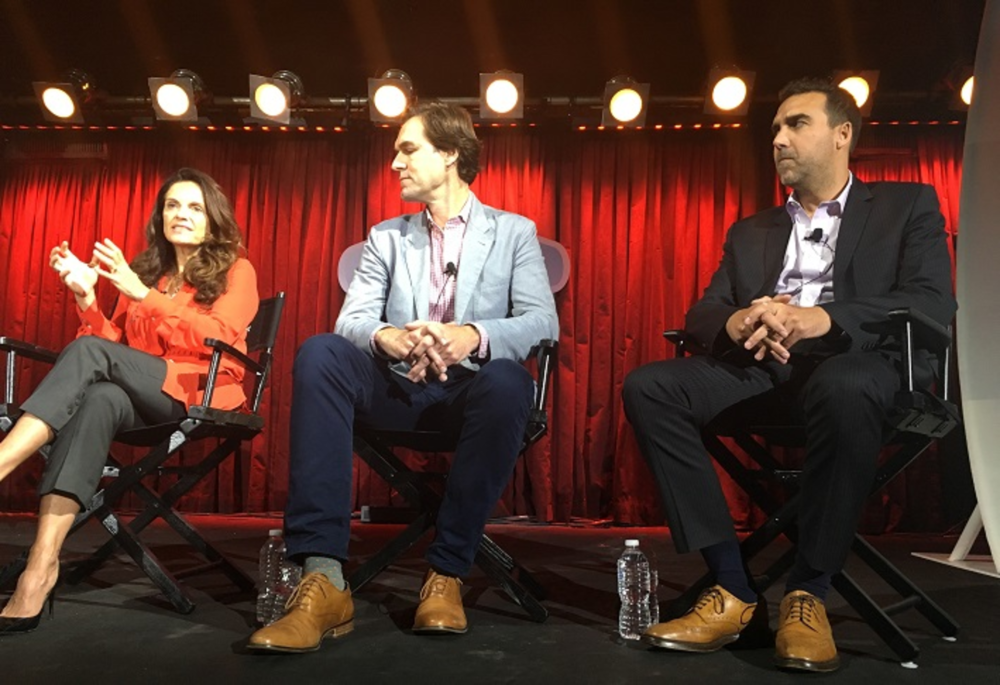(Mary Gail Pezzimenti: The Huffington Post, Vincent Geraghty: Leo Burnett, Rowley Samuel: Energy BBDO)
The lessons from Advertising Week are plenty, and after spending four days scuttling from session to session, I wanted to share what I found to be a few of the more worthy pieces of advice. Here are just some of the trends, insights, and even warnings from throughout the week that I culled from various seminars.
Feel free to continue the conversation in the comments area below, and share some of the lessons you learned with #AWXII on social media.
Fast, Good, or Cheap: Reality of Today’s Content Creation
1. Serve up content, and then be in the conversations about it to be relevant.
2. Align content around your audience by polling for insights; analytics will reveal how to plan your content strategy. How important are insights and data to the creative process? Insights help brands figure out how to craft content plans in a way that’s cost effective.
3. Content plans must be sustainable.
4. A waterfall of content does not equal content strategy; marketers need a good plan to distribute content properly.
5. Good insights lead to compelling content.
6. Third-party, or outsourcing for your content, is somewhat of an outdated concept; there’s too much content production for outsourcing. Insourcing is the way to go. Hire teams of people to create your content.
7. Use influencers to pull audiences towards your brand.
8. Putting an approval process on a digital platform as if it were a broadcast property will cause inefficiencies in time production and management.
9. Marketers must have always-on content.
10. Companies will have an extremely negative impact on their brands if they ignore where people are going: mobile and social.
“Curate. Create. Collaborate.” @mgpezz, VP of content creation at @huffingtonpost, on the publisher’s methods #AWXII pic.twitter.com/CSP4MEM5Xl
— Leo Burnett (@LeoBurnett) September 28, 2015
Social Disruption: Securing Your Voice in the Crowd
1. Forty percent of customers expect their financial institutions to be social.
2. Brands must unify their efforts to engage with customers as one brand voice and experience.
3. Drive awareness, drive intent, and then, ultimately drive action.
4. Each social media channel lives differently; each community has its own culture and language.
5. Social advocates are able to help build loyalty and cause positive disruption for a brand.
6. Without social tools, marketers are investing in a plethora of content but don’t learn or pull insights from social data.
7. Engagement opportunities add up to great experiences; the more people interact with companies, the more their experiences are defined.
8. Mobile and social should be highly contextual, personal, and frictionless—without hurdles.
9. Have a unified brand position (i.e. how customers perceive and interact with the brand) across all platforms, e.g. TV, digital, apps, and social.
10. Put the human back into the marketing equation; the more marketers know about customers and their needs, the better they can relate.
11. Consumers, while important, aren’t just online. They live and operate in an offline world, which is an extremely important world for marketers to remember.
12. Don’t go into marketing with preconceived notions about strategy, consumers, data, likes or dislikes, etc.; remain open to possibilities.
“Successful companies aren’t thinking ‘Brand to social’ they’re thinking ‘social to Brand'” @iheartflooz @SoFi #AWXII pic.twitter.com/Wf4Xe42wvc
— Nasdaq (@NASDAQ) September 29, 2015
Disrupting News for the Digital Generation
1. Social is great for building big audiences, but can be tough to monetize. It’s a way to reach people in new creative ways at generate scale. Scale plus brand affinity is the secret sauce for success.
2. Social is a platform to extend the brand, establish new connections, and drive traffic. Brands should provide a beautiful, seamless customer experience via mobile.
3. Provide platforms where people can consume content via Web and social, and then tailor your content to users’ tastes.
4. The consumer shift to mobile has forced marketing strategy to be focused on personal and intimate experiences; users can have moments of privacy, discovery, and learning all while on mobile.
5. Ideally, content goes beyond providing perfunctory information to fill customers’ emotional needs. Stand out by adding value and have something to say that’s worthwhile to your audience.
6. Start with mobile first as the premise of your marketing strategy; everything else will be easier to create and make relevant.
7. Your brand has a relationship with the consumer, and it’s up to marketers—i.e. the brand—to provide a relevant experience.








